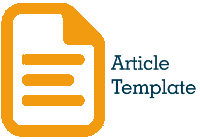WEB LEARNING TO IMPROVE COMPREHENSION OF JAPANESE PAST TENSE ADVERBIAL SENTENCES
DOI:
https://doi.org/10.35457/antivirus.v19i1.4080Keywords:
Japanese Language, Waterfall Method, Minna No Nihongo, Learning System, Educational TechnologyAbstract
Japanese, or Nihongo (日本語), is the primary language of Japan, spoken by more than 125 million people globally. It belongs to the Japonic language family and features a distinct writing system composed of Kanji, Hiragana, and Katakana. Kanji, derived from Chinese characters, while Hiragana and Katakana (referred to as Kana) are phonetic alphabets with 46 basic characters. Hiragana is used for native words and grammar, while Katakana is utilized for foreign words and emphasis. Japanese grammar follows a Subject-Object-Verb (SOV) structure, with social hierarchy reflected through the use of keigo, as well as past adverbial sentences and verb conjugations marked by formality. The global fascination with Japanese culture, including anime and manga, has sparked increased interest in the language. To facilitate learning, the author created a web-based learning platform using the Waterfall methodology, incorporating system engineering, requirement analysis, design, coding, testing, and maintenance phases. The platform is aimed at enhancing learners' understanding of past tense adverbial sentences, with pilot tests indicating considerable improvements in users' Japanese language abilities. Besides offering interactive content, the system also provides a well-organized and user-friendly learning experience. This study aims to positively impact Japanese language education and encourage broader adoption of educational technology, ultimately assisting learners in achieving higher Japanese proficiency in the digital age
Downloads
References
[2] M. Alfiyana, “Perancangan Website Untuk Media Pembelajaran Bahasa Jepang Dengan Tema Penggunaan Kata Keterangan Tingkat Dan Kuantitas,” J. Inform. dan Tek. Elektro Terap., vol. 12, no. 2, 2024, doi: 10.23960/jitet.v12i2.4100.
[3] U. Fathiyyah and Supria, “Aplikasi Belajar Aksara Dan Kosakata Jepang Level N5 Berbasis Website,” Semin. Nas. Ind. dan Teknol., no. September, p. 32, 2023.
[4] T. Hidayat, O. Nurdiawan, and Y. Arie Wijaya, “Analisa Website Portal Informasi Sekolah Dengan Menggunakan Metode Heuristic Evaluation,” JATI (Jurnal Mhs. Tek. Inform., vol. 7, no. 1, pp. 740–746, 2023, doi: 10.36040/jati.v7i1.6559.
[5] S. M. Pulungan, R. Febrianti, T. Lestari, N. Gurning, and N. Fitriana, “Analisis Teknik Entity-Relationship Diagram Dalam Perancangan Database,” J. Ekon. Manaj. dan Bisnis, vol. 1, no. 2, pp. 98–102, 2023, doi: 10.47233/jemb.v1i2.533.
[6] P. Seminar, N. Mini, and R. Mahasiswa, “1 , 1 * 1,” vol. 3, no. 1, pp. 1–9, 2024.
[7] A. Zalukhu, P. Swingly, and D. Darma, “Perangkat Lunak Aplikasi Pembelajaran Flowchart,” J. Teknol. Inf. dan Ind., vol. 4, no. 1, pp. 61–70, 2023, [Online]. Available: https://ejurnal.istp.ac.id/index.php/jtii/article/view/351
[8] R. Abdillah, “Pemodelan Uml Untuk Sistem Informasi Persewaan Alat Pesta,” J. Fasilkom, vol. 11, no. 2, pp. 79–86, 2021, doi: 10.37859/jf.v11i2.2673.
[9] T. Arianti, A. Fa’izi, S. Adam, and M. Wulandari, “Perancangan Sistem Informasi Perpustakaan Menggunakan Diagram UML (Unified Modelling Language),” J. Ilm. Komput. Terap. dan Inf., vol. 1, no. 1, pp. 19–25, 2022.
[10] S. H. Bariah and M. I. Putera, “Penerapan Metode Waterfall Pada Perancangan Sistem Informasi Pengolahan Data Nilai Siswa Sekolah Dasar,” J. Petik, vol. 6, no. 1, pp. 1–6, 2020, doi: 10.31980/jpetik.v6i1.721.
Downloads
Published
Issue
Section
License
Copyright (c) 2025 Antivirus : Jurnal Ilmiah Teknik Informatika

This work is licensed under a Creative Commons Attribution-ShareAlike 4.0 International License.
Authors who publish with this journal agree to the following terms:
- Copyright on any article is retained by the author(s).
- Author grant the journal, right of first publication with the work simultaneously licensed under a Creative Commons Attribution License that allows others to share the work with an acknowledgement of the work’s authorship and initial publication in this journal.
- Authors are able to enter into separate, additional contractual arrangements for the non-exclusive distribution of the journal’s published version of the work (e.g., post it to an institutional repository or publish it in a book), with an acknowledgement of its initial publication in this journal.
- Authors are permitted and encouraged to post their work online (e.g., in institutional repositories or on their website) prior to and during the submission process, as it can lead to productive exchanges, as well as earlier and greater citation of published work.
- The article and any associated published material is distributed under the Creative Commons Attribution-ShareAlike 4.0 International License











